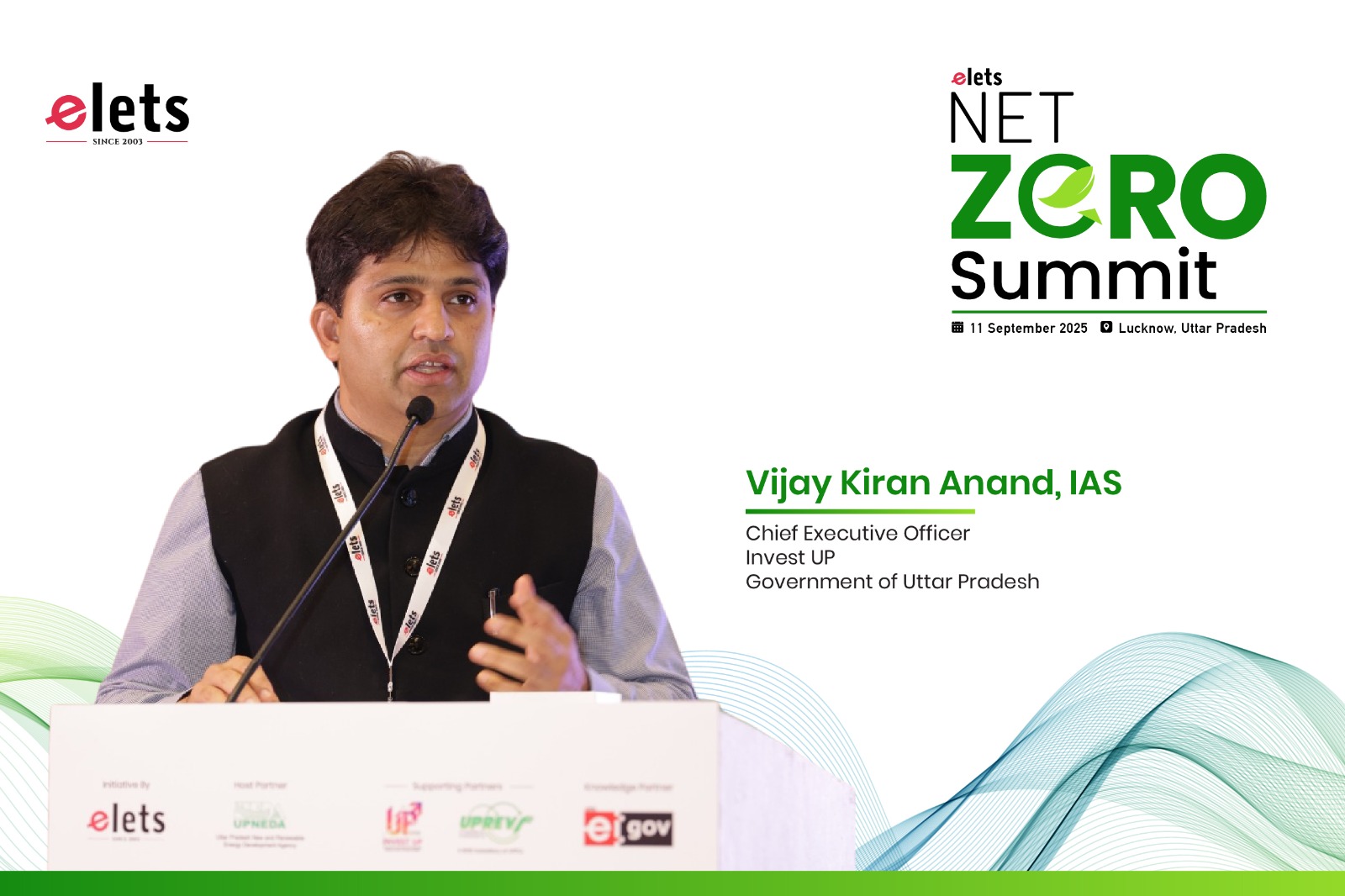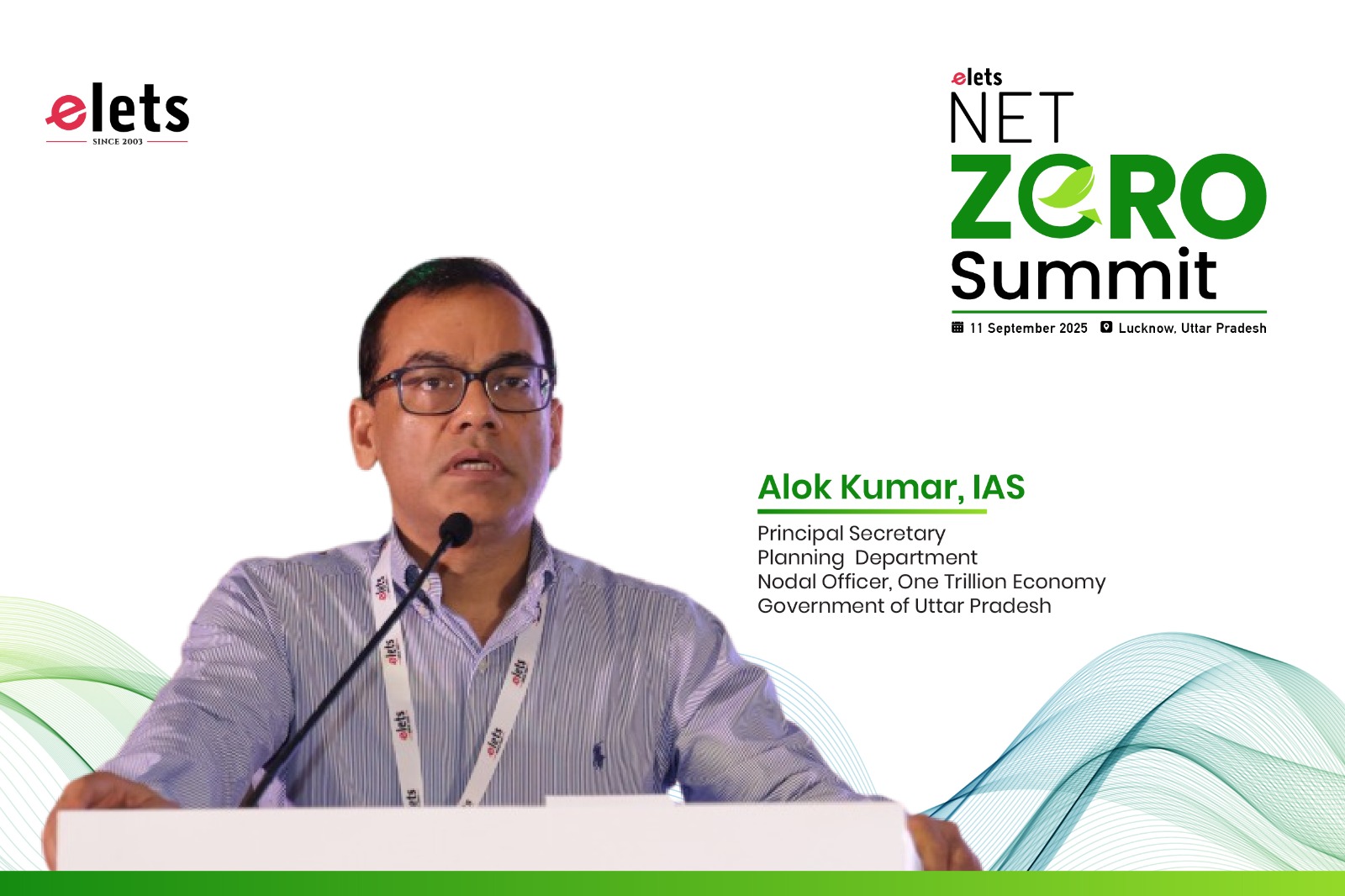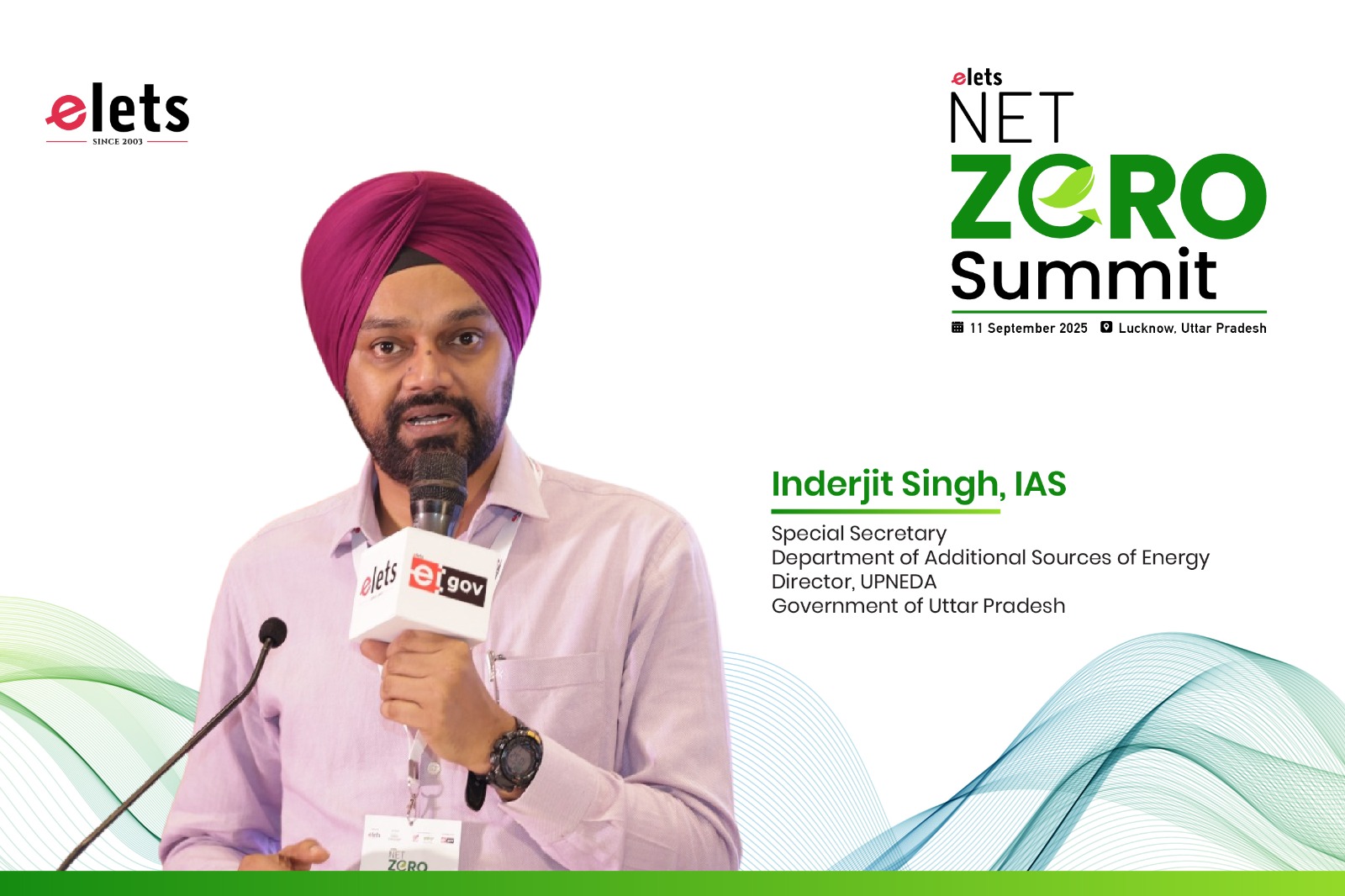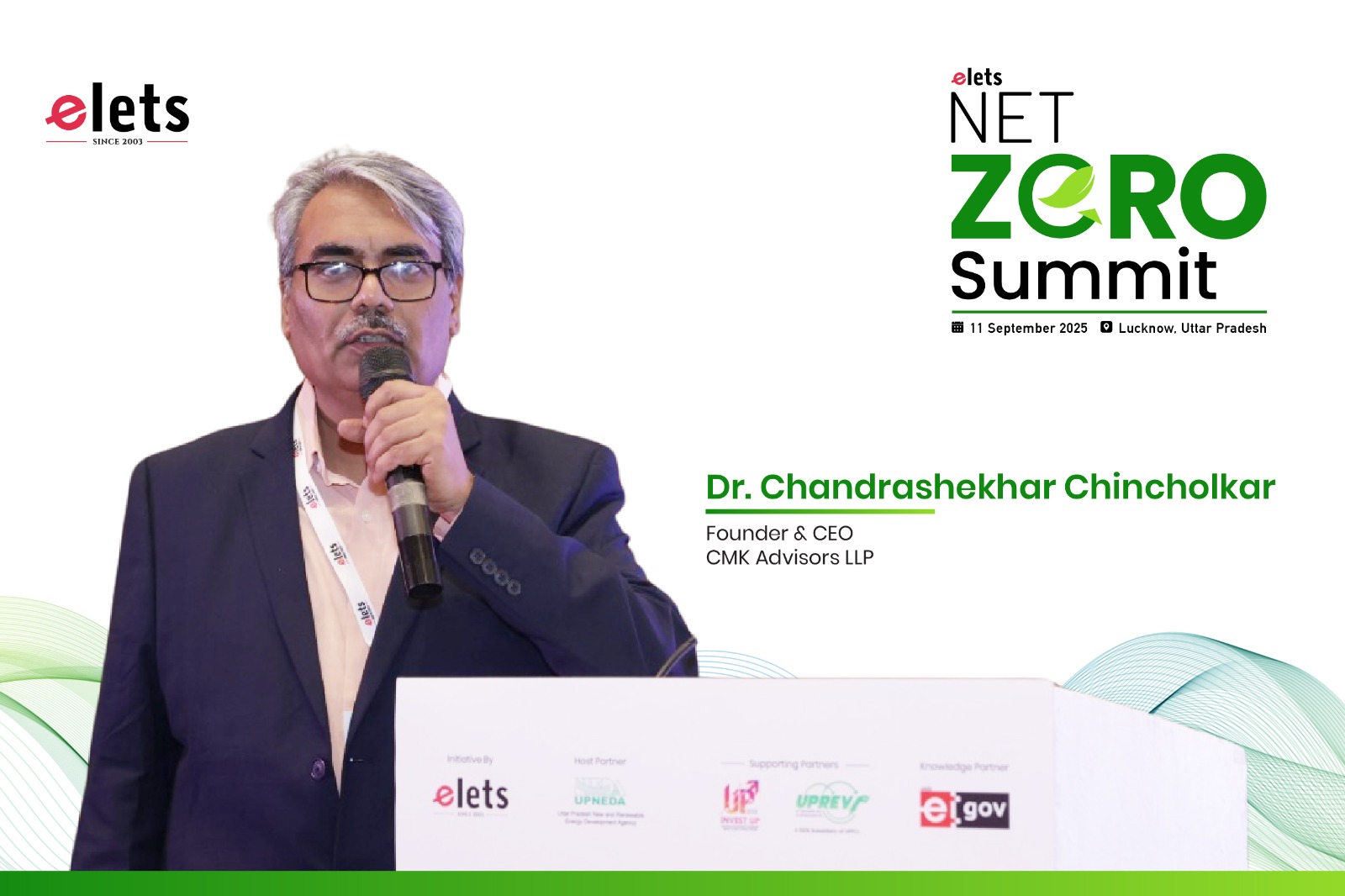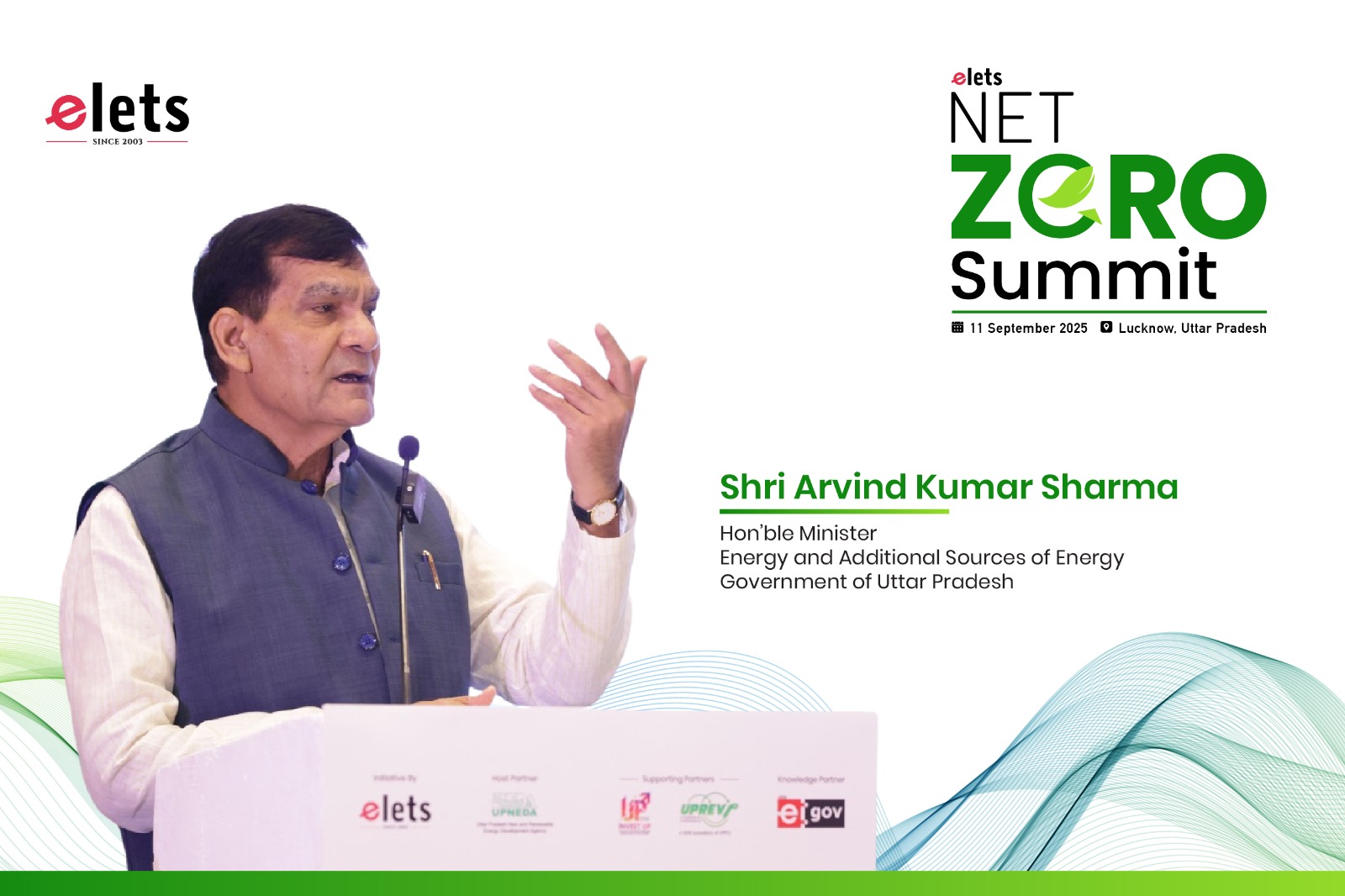
With India’s growing energy demands and carbon-heavy industries, balancing industrial growth with green hydrogen integration is crucial. Through initiatives like the National Green Hydrogen Mission and co-locating hydrogen production with renewable energy, India aims to make green hydrogen a key part of its sustainable energy future. In an exclusive interview, Dr. Ashok Kumar, Deputy Director General at the Bureau of Energy Efficiency, sheds light on the opportunities, challenges, and role of clean energy investments in advancing green hydrogen with Nijhum Rudra of Elets News Network (ENN).
When was BEE formed, and what is your core mission and vision?
The Government of India established the Bureau of Energy Efficiency (BEE) on March 1, 2002, under the Energy Conservation Act of 2001. Its mission is to develop policies and strategies that emphasise self-regulation and marketdriven approaches within the broader energy framework.
The bureau’s primary goal is to reduce the energy intensity of the Indian economy by encouraging active participation from all stakeholders. This collaborative approach aims to accelerate and sustain the adoption of energy efficiency across all potential sectors of the Indian economy.
How does the Bureau of Energy Efficiency align with India’s growth in the green energy mission? Are you undertaking any initiatives?
The Bureau of Energy Efficiency plays a vital role in promoting energy efficiency and conservation across industries, buildings, appliances, transportation, and other related sectors.
Beyond these efforts, BEE also implements the Standards & Labeling (S&L) Program and the Energy Conservation Building Code (ECBC), which is evolving into the Energy Conservation and Sustainable Building Code (ECSBC) to incorporate sustainability features beyond energy efficiency and conservation. BEE is also actively involved in promoting electric mobility, green transport initiatives, and the development of the carbon market under the CCTS Scheme.
These initiatives collectively contribute to reducing energy intensity, enhancing sustainability, and guiding India toward a greener path to development.
Can you highlight some success stories of BEE that have been game-changers in India’s clean energy mission?
BEE has numerous success stories that have significantly advanced India’s clean energy transition. Since 2006, the Standards & Labeling (S&L) Program has covered over 38 appliances, with 16 under the mandatory regime and 22 under the voluntary regime. This program has ensured reduced energy consumption without compromising performance, benefiting appliances such as air conditioners, refrigerators, LED lights, and fans, providing energy-efficient choices for consumers.
For the industrial sector, the Perform, Achieve & Trade (PAT) Scheme, launched in 2012, is a market-based mechanism that incentivizes industries to enhance energy efficiency and trade surplus savings as Energy Saving Certificates (ESCerts). Currently, 1,333 designated consumers (DCs) across 13 energy-intensive sectors are covered under the PAT scheme. The initiative has enabled industries to achieve an annual emission reduction of approximately 110 million tons of CO₂ and facilitated the trading of 33.66 lakh ESCerts worth around 440 crore.
In the building energy sector, as of March 2024, 22 states and 3 Union Territories (UTs) have adopted the Energy Conservation Building Code (ECBC), with 476 Urban Local Bodies (ULBs) integrating its provisions into the building approval process. ECBC is currently being upgraded to the Energy Conservation and Sustainable Building Code (ECSBC) to incorporate additional sustainability features for commercial and residential buildings, making them more energy-efficient and future-ready.
The Eco Niwas Samhita (ENS), launched in 2018, is a key initiative aimed at enhancing energy efficiency in residential buildings. It sets minimum performance standards to reduce heat gain in cooling-dominated climates and heat loss in heating-dominated climates while ensuring adequate natural ventilation and daylighting. ENS applies to residential projects with a connected load of 100 kW or more or a contract demand of 120 kVA or more.
In summary, various energy efficiency schemes and programs have resulted in reducing 306.40 million tons of CO2 emissions per year, which translates into monetary savings of approximately 1.94 lakh crore.
How does green hydrogen align with India’s broader clean energy strategy, and what role will it play in meeting the country’s future energy demands?
Green hydrogen is a crucial component of India’s clean energy strategy, supporting energy security, carbon emission reduction, and the expansion of renewable energy.
Launched in 2023, the National Green Hydrogen Mission (NGHM) aims to position India as a global leader in green hydrogen production, targeting 5 million metric tons per year by 2030.
In the industrial sector, green hydrogen is set to replace grey hydrogen in refineries, fertilizer production, and ammonia manufacturing, significantly reducing carbon footprints. Additionally, blending hydrogen with natural gas and developing hydrogen-based power generation will help meet growing energy demands.
Green hydrogen also holds immense potential in reducing emissions in hard-to-abate sectors such as steel production and transportation, facilitating the development of hydrogen fuel cell vehicles and decarbonizing mobility solutions. This will further accelerate India’s transition toward a sustainable energy future.
What technological advancements are needed in clean energy sectors like solar, wind, and energy storage to support the effective production and use of green hydrogen in India?
Technological advancements such as high-efficiency solar panels, innovations in adaptation/adoption (e.g., floating solar farms), improved inverters, hybrid renewable systems, higher-capacity wind turbines, advanced hydrogen storage solutions, digitalization and AI for smart energy management, and cost-efficient electrolyzers with localized manufacturing will enhance India’s renewable energy potential. These innovations will drive cost-effective green hydrogen production, reduce import dependency, and position India as a global leader in the green hydrogen economy, supporting its net-zero target by 2070 and beyond.
Also Read :- CIAL Leads the way with world’s first airport-based Green Hydrogen plant
How can India leverage its renewable energy capacity, particularly solar and wind, to scale up green hydrogen production and achieve its clean energy goals?
By expanding renewable energy for hydrogen production through hybrid solar-wind parks, offshore wind farms, and advanced energy storage solutions, and leveraging AI-driven energy management, India can ensure continuous and efficient hydrogen production. Strengthening global trade partnerships with countries like Japan, Germany, and the EU will further position India as a key stakeholder in the green hydrogen space.
What policy initiatives are currently in place to promote green hydrogen as a key element of India’s clean energy transition, and what more is needed to accelerate its growth?
India’s National Green Hydrogen Mission (NGHM), launched in 2023, aims to achieve an annual green hydrogen production capacity of 5 million metric tonnes (MMT) by 2030, backed by 125 GW of renewable energy. The initiative has an initial budget of 19,744 crore, with 17,490 crore allocated to the SIGHT program, which includes incentives for electrolyzer manufacturing and green hydrogen production. Additionally, 1,466 crore is designated for pilot projects, such as lowcarbon steel, mobility, hydrogen hubs, and shipping pilots, while 400 crore is set aside for research and development (R&D), and 388 crore for other mission components.
The Production-Linked Incentive (PLI) Scheme further supports domestic manufacturing of electrolyzers and renewable energy equipment, strengthening India’s clean hydrogen ecosystem.
To accelerate green hydrogen adoption, it is essential to establish dedicated R&D centres focused on enhancing electrolyzer efficiency, reducing production costs, and developing advanced storage solutions. Additionally, capacity-building initiatives should be implemented to equip the workforce with the skills required for this emerging sector, ensuring a smooth transition to a clean hydrogen economy.
Be a part of Elets Collaborative Initiatives. Join Us for Upcoming Events and explore business opportunities. Like us on Facebook , connect with us on LinkedIn and follow us on Twitter, Instagram.
"Exciting news! Elets technomedia is now on WhatsApp Channels Subscribe today by clicking the link and stay updated with the latest insights!" Click here!




